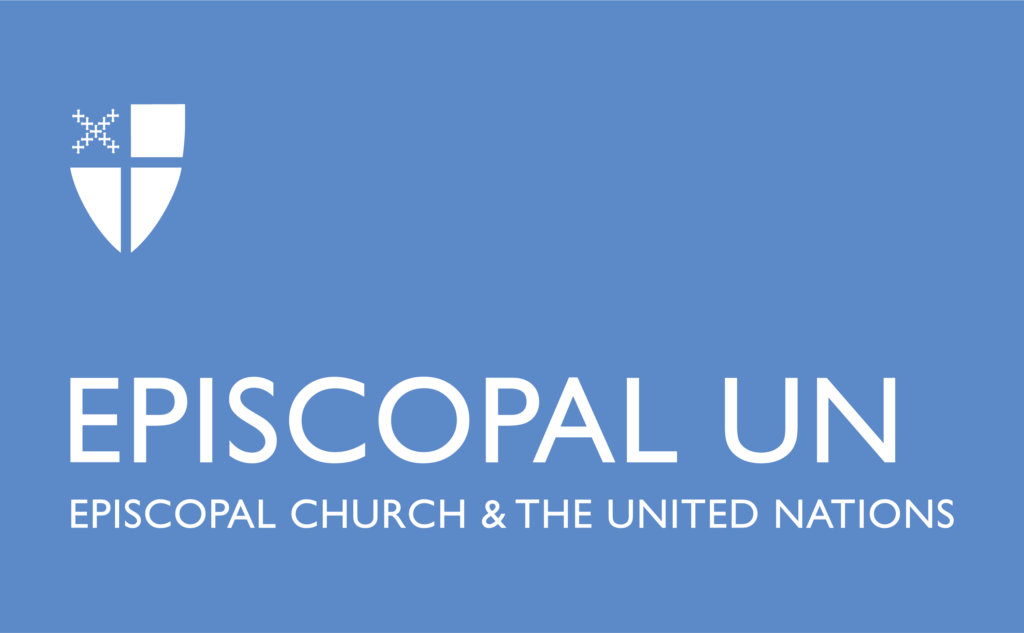From 16 to 365 Days of Activism Against Gender-Based Violence
Today, December 10th, is the worldwide commemoration of Human Rights Day and the final day of the 16 Days of Activism Against Gender-Based Violence that runs each year from November 25th – December 10th.
And yet, it is not the final day. Gender-based violence requires our sustained action 365 days a year. In this spirit, we share two resources that are suitable for your use throughout the year.
In 2010, two organizations affiliated with the Episcopal Church, The Episcopal Women’s Caucus and Anglican Women’s Empowerment, joined to create a booklet of prayers advocating for the end of gender-based violence, intended for use during the Sixteen Days of Activism to End Gender Based Violence. These organizations were also connected with the United Nations Commission on the Status of Women and UN Women, who have continued The Sixteen Days of Activism to End Gender Based Violence.
Below is the booklet created in 2010, followed by an essay by the Reverend Terri Pilarski, Rector of Christ Episcopal Church in Dearborn, MI (Diocese of Michigan) entitled “Not In Our Pews,” which summarized a workshop by the same title regarding gender based violence and abuse. While these poems and articles are from 2010, they are still relevant today. The data below is old, and no doubt the statistics are worse now.
As we end this year’s campaign for the 16 Days of Activism Against Gender-Based Violence, let us continue our prayers for the eradication of gender-based violence over the next 365 days and beyond.
November 02, 2010
Not In Our Pews
by The Rev. Terri C. Pilarski
The first congregation I served as Rector struggled with the reality that a prominent couple in the parish was going through a divorce, the wife a victim of years of domestic abuse. With the pending divorce the abuse escalated, and threatened to spill into the church itself. A few years later my friend and colleague at another church experienced a tragic domestic violence episode in her congregation. Throughout this time I learned that domestic violence was, by far, the primary cause of police intervention in our small but wealthy suburban community.
At a recent conference called, “Not In Our Pews” held in Oconomowoc, Wisconsin and sponsored by Project SAFE, an organization comprised of a number of religious institutions and service provider agencies in Wisconsin, I learned more about this all too common tragedy in our society. First, I learned that Domestic Violence, while still used for a variety of policy reasons, is often known as Intimate Partners Violence. This term expands the issue beyond the violence that occurs in some marriages to include a new awareness of violence in teen dating, in GLBT couples, and couples who do not live in the same house. Domestic Violence/Intimate Partner Violence is defined as: a pattern of abusive behavior in which a person uses coercion, deception, harassment, humiliation, manipulation and/or force in order to establish and maintain power and control over that person’s current or former intimate partner.
The conference goals were to: build partnerships between congregational leaders, service providers, and law enforcement programs; to provide faith and congregational leaders with strategies and resources to effectively and safely meet the needs of victims and families; to equip clergy and lay leaders to assist victims to make thoughtful decisions from a theological perspective while remaining in relationship with God and their faith community; to explore how faith communities might work to end Intimate Partner Violence; to help congregational leaders navigate a congregation that is impacted by Intimate Partner Violence. The keynote speaker was the Rev. Al Miles, an expert in Intimate Partner Violence prevention and treatment, and the author of several books on domestic violence including “Domestic Violence: What Every Pastor Needs to Know” 2nd edition, due for release in February 2011 (Fortress Press).
As clergy and lay leaders of congregations this conference emphasized the need for increased awareness of the prevalence of Intimate Partners Violence, including that which occurs in teen dating and elder abuse. We cannot hide behind a veil pretending that it only happens in certain demographics. The reality is this violence knows no boundaries and impacts equally every demographic across the spectrum from rich to poor, from educated to not, across lines of race and ethnicity, age and gender orientation. Congregations need to reach out to social service agencies that specialize in Domestic Violence and Intimate Partner Violence and work together to raise awareness and form responses to this rampant problem in our midst. 95% of reported cases of Intimate Partner Violence occurs with a man victimizing a woman. As clergy we have a responsibility to become educated and able to discuss Domestic Abuse/Elder Abuse/Teen Dating/Intimate Partner Violence in premarital counseling sessions, outlining what constitutes a healthy relationship, to recognize the warning signs when they appear, and to have an appropriate course of action. A healthy relationship does not include coercion, deception, harassment, humiliation, manipulation and or force in order to establish control and maintain power over a current or former intimate partner.
A few key points on what to do or not to do:
• do not attempt couple counseling when Intimate Partner Violence is a known element of the relationship.
• If a victim speaks up and shares her story, do not judge, do not put words in her mouth, do not encourage her to stay in the relationship, or leave, or use scripture as a means to further victimize her.
• Offer hope, leaving an offender is a process, victims want the violence to end not the relationship.
• Violence is a learned behavior, it is a conscious decision and a willful choice of the perpetrator to get what they want when they want it.
• Intimate Partner Violence is not caused by addiction to drugs or alcohol, stress, children, job stress, psychological illness, pets, Satan, and especially the abuse is not caused by the victim. It is not a problem of anger or control.
• It is a problem of entitlement and a demand to have their way when they want it.
• Do not think that you can assist the person alone, reach out for trained help from an appropriate social service agency.
• Provide congregational training on Intimate Partner Violence
• Provide resources that women can find in your church bathrooms that will help them find appropriate help including an emergency shelter for battered women. Likewise provide resources for men who are victims of abuse.
Intimate Partner Violence includes physical, psychological, verbal, sexual, pet or property destruction (if I can’t hurt you I will hurt what you love), and stalking. The tactics include, but are not limited to dictating how victims dress; to whom they can relate or not relate; what they can or cannot say and think; when the victim can or cannot study, worship, or work; describing the victim as disgusting, disrespectful, or using vulgar names like slut, stupid, whore.
When clergy and lay leaders are willing to become informed, educated, and trained, by reaching out and teaming up with social service agencies congregations can create healthier environments. Clergy and lay people are able to bring in the spiritual dimension of hope, grace, and love that social service agencies are often prevented from approaching due to the limits of their practice. By partnering together faith communities and social service agencies can work to create intervention strategies and prevention strategies for healthier communities.
Resources compiled by Safe Havens, interfaith partnership against domestic violence:
Articles and Brochures
Faith Trust Institute: “What Every Congregation Needs to Know About Domestic Violence” 1994 (206) 634-1903, www.faithtrustinstitue.org. Also, “What You Need to Know if a Child is Being Abused or Neglected”, 1992.
Fortune, Marie, “A Commentary on Religious Issues in Family Violence,” originally published in Violence in the Family: A Workshop Curriculum for Clergy and Other Helpers. Pp 137-151, The Pilgrim Press, Cleveland, 1991. Contact Faith Trust Institute: (206) 634-1903, www.faithtrustinstitue.org.
Peace At Home, Inc., “Domestic Violence: The Facts,” 1994-2004. Contact Peace At Home, Inc: 877-546-3737, peaceathome@peaceathome.org.
Safe Havens, “Guidelines for Working with Congregations Facing Domestic Violence.” Contact SafeHavens: 617-645-1820, info@interfaithpartners.org.
BooksAdams, Carol J. & Fortune, Marie M., Editors, Violence Against Women and Children: A Christian Theological Sourcebook, The Continuum Publishing Company, New York, NY, 1998.
Afkhami, M. Safe and Secure: Eliminating Violence Against Women and Girls in Muslim Societies, Sisterhood Is Global Institute, Bethseda, MD, 1998. Contact Faith Trust Institute 206) 634-1903, www.faithtrustinstitue.org.
I would now add:
Manne, Kate, “Down Girl, The Logic of Misogyny. Oxford University Press, New York, New York, 2018.
Hill, Jess, “See What You Made Me Do”, Schwartz Publishing, 2019


